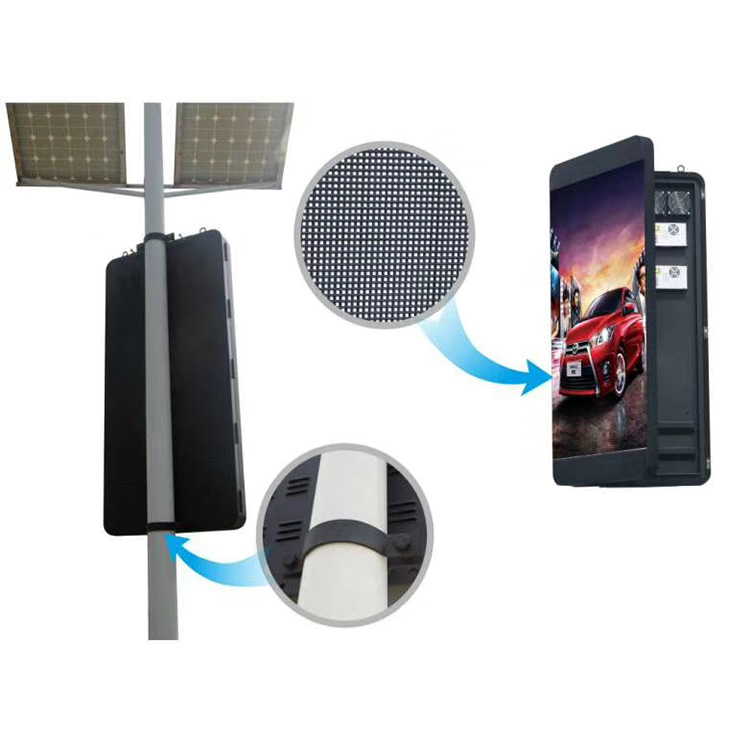The long-range evolution planning system single-chip (LTE SoC) warfare for mobile phones continues to heat up. Following the launch of Qualcomm and Marvell's LTE SoCs with integrated baseband and application processors, MediaTek has also adopted a 64-bit, 8-core high-profile solution in the near future, with a higher price/performance advantage. The LTE mobile phone market has seized a place.
The single-chip (SoC) warfare of the Smart Phone Long-Range Evolution (LTE) system has intensified. After the official opening of the LTE market in mainland China, the LTE application program has undoubtedly become the focus of attention of various mobile processor manufacturers. In addition to competing to launch multi-band multi-mode LTE baseband (Baseband) chips, chip vendors are also fully deploying single-chip solutions for LTE data-chip integrated application processors (APs) (Table 1), resulting in higher integration and lower consumption. The advantage of electricity, capture the LTE mobile phone market.

Figure 1 Yan Junding, an analyst at Jibang Technology Memory Storage Division, said that the future integration of mobile application processors and LTE data baseband chips will become more and more obvious.
Ji Jun, an analyst at Jibang Technology Memory Storage Division (Figure 1), said that from the dynamic observation of major mobile phone chip manufacturers, the future integration of mobile application processors and LTE data base chips will become more and more popular. Obviously, this is also the most important development direction of various processor manufacturers in 2014.
Qualcomm / Mai Weier pioneers thousands of yuan LTE mobile phone released
In the single-chip market of LTE baseband integrated application processors, Qualcomm's solution is the most complete and mature, especially the Snapdragon 800 series, which is the most well-known, almost sweeping the entire LTE mobile phone chip market.
However, Qualcomm is not satisfied with this. In order to further expand the market share of low- and medium-end smart phones and seize the opportunity of China's time-division long-term evolution plan (TD-LTE), Qualcomm released the latest generation of Snapdragon series Snapdragon 410 LTE in December 2013. SoC chipset, and claimed to assist Chinese OEMs to develop low-end LTE smartphones below $150 (approximately RMB1,000).
On the other hand, Maier, who is ambitious for the low-end LTE mobile phone market, has also been active in recent days. Maier launched the ARMADA Mobile PXA1088 LTE Pro SoC immediately after the release of TD-LTE in China, and also showed that this solution is intended to help the Chinese market to generate thousands of RMB LTE smart phones, and the first to adopt Maiweier LTE The affordable high-profile LTE mobile phone developed by the SoC program was officially unveiled in February this year.
It is reported that Samsung, Samsung, Yulong Coolpad, Lenovo, Hisense and other mobile phone brand factories will showcase the entry-level LTE models equipped with the Maiweier LTE SoC platform at this Global Mobile Communications Conference (MWC).
It is worth noting that MediaTek, the second brother of the mobile device processor market, will certainly not miss the LTE business opportunity. Qualcomm and Maiwell will not continue to sit in the high-priced LTE mobile phone market. MediaTek will unveil its position in the mid-tier mobile phone chip market and release the first LTE data processor chip at the 2014 International Consumer Electronics Show (CES). -MT6290, recently borrowed the new processor core of Amgen International (ARM), released the eight-core LTE SoC solution, and then LTE SoC mobile phone chip hot war.
[@B]ARM new core help line MediaTek 8 core LTE SoC work [@C] ARM new core help line MediaTek 8 core LTE SoC
Targeting the fast-growing mainstream mobile and consumer electronics markets, ARM officially announced the Cortex-A17 core on February 11th, both in terms of power consumption and size, significantly improved compared to the Cortex-A9 core, which was originally locked in the mid-market. At present, MediaTek has taken the lead in obtaining authorization and launched an eight-core LTE SoC developed with Cortex-A17.

Figure 2 Ian Ferguson, vice president of marketing for ARM, believes that the Cortex-A17 will continue to be the Cortex-A9 in the future, making it an ideal choice for mid-range mobile processor cores.
Ian Ferguson (Figure 2), vice president of marketing for ARM, said that comprehensive market analysis information, Mid-range products in the price range of $200 to $300, including mobile phones, smart TVs and telematics systems, are relatively low. Price products are less costly, and most manufacturers are willing to introduce the latest technology to improve product differentiation. Therefore, they are full of various innovative design and development potentials. It is estimated that shipments will reach 500 million in 2015.
Targeting the fast-growing mid-range mobile device market, ARM's Cortex-A17 processor core delivers 60% better performance than the company's previously locked mid-market Cortex-A9, with both power and footprint. improve. On the other hand, the Cortex-A17 core also provides processor-wide support for the ARM big.LITTLE processor technology through the CoreLink CCI-400 Cache Coherent Interconnect architecture.
Ferguson stressed that although the market has recently focused on the 64-bit processor architecture, ARM observations show that the ARMv7 architecture, or 32-bit architecture, will continue to have a place in the market in a short period of time. The reason is that there are currently 2 billion mobile phones imported into the ARM processor. In other words, it will take some time for the overall industry to move to 64-bit architecture hardware, and the industry's demand for components for the 32-bit architecture will continue to climb.
At the same time that ARM released the Cortex-A17 core architecture, MediaTek also released the first true eight-core LTE smart phone single-chip solution - MT6595, which uses the ARM Cortex-A17 architecture and supports Ultra High Definition (UHD) H. 265 image codec specifications.
Zhu Shangzu, general manager of MediaTek's wireless communications division, said that in order to cope with the fast-growing LTE era with global customers, MediaTek is the first to introduce the highly integrated eight-core LTE single-chip solution, the MT6595. In the future, MediaTek will be committed to providing a richer LTE solution and creating differentiated products that integrate advanced features and rich multimedia.
According to Zhou Yujun, deputy general manager and chief technology officer of MediaTek, MediaTek uses four Cortex-A17 as a large core with four Cortex--as compared with applications such as flat panel, which have higher power consumption and heat dissipation limitations. As a small core, the A7 is developed with exclusive CorePilot technology. Through algorithms, dynamic temperature control and power management technology, the cores and cores can be coordinated with each other. When the mobile phone multiplex processing needs or high-level gaming applications, the A7 can play eight cores. Open performance.
It is understood that MT6595 integrates multi-frequency multi-mode LTE data processor chip, which can simultaneously support frequency division/time division multiplexing long-range evolution plan (FDD/TD-LTE), high-speed packet access (HSPA), time-sharing-synchronization code division. Multiple Access (TD-SCDMA), Global System for Mobile Communications (GSM) and GSM Enhanced Data Rate Evolution (EDGE), the chip can also be used with the company's RF chip solution to support more than 30 communication bands, which can be used worldwide. The network environment provided by LTE carriers around the world.
Zhou Yujun believes that the release of MediaTek MT6595 is a milestone in the company's formal entry into high-end mobile phone chips. The MT6595 and its reference design will be sampled in the first half of this year, and the terminal products are expected to be available in the second half of the year. It is worth noting that after MediaTek, Broadcom also recently announced a new generation of solutions. It is reported that Broadcom has locked in LTE smart phones under $300, and launched dual-core and quad-core LTE SoCs in one fell swoop, which will continue to prolong the battle of the affordable high-end LTE mobile phone market.
MediaTek/Broadcom will invest in the LTE single chip market
Sravan Kundojjala, a technology analyst for mobile phone components at Strategy AnalyTIcs, said that the LTE baseband market is expected to grow at 64% in 2013-2014 and 500 million in wafer shipments. Seeing such a strong growth momentum, coupled with the new wave of LTE business opportunities launched after the official TD-LTE business transfer in China, many mobile phone chip manufacturers are more eager to bring the economic benefits brought by LTE, and competing to launch related solutions, especially in the middle. The battle for high-level models is the most intense. Therefore, Broadcom is targeting smart phones with less than $300 to launch two LTE single-chips and corresponding public board design platforms.
Robert Rango, executive vice president and general manager of Broadcom's operations and wireless business group, said that Broadcom's low-cost LTE solution for the $300 model can reduce the overall bill of materials (BOM) cost of the terminal device, and the public board design platform can also accelerate customers. Product development and time-to-market, with high design flexibility and other features.
It is understood that the two solutions released by Broadcom are dual-core M320 and quad-core M340 LTE single-chip, which can support FDD-LTE and TD-LTE, and Qualcomm, MediaTek and other manufacturers in China's mid-level mobile phone market. The strength of the game is strong. At present, the M320 is in the mass production phase, and the terminal device is unveiled at the Global Mobile Communications Conference at the end of February. The four-core M340 is scheduled to be officially launched in the second half of 2014.
Obviously, the product development strategy of LTE data processor chip integration application processor has become the direction of the processor industry who intends to enter the LTE market. Although Qualcomm will continue to dominate the LTE SoC chip market in the short term, with the release of the parity plan released by Maiwei, MediaTek and Broadcom, there will be a wave of LTE SoC market battles.
With the continuous upgrading of terminal consumption in smart city, LED lamp pole screen, as an indispensable information carrier in smart street lamp system, is welcomed by many media companies and government agencies.
LED light pole screen is mainly installed on the street light pole on both sides of the highway and the street. Because the light pole display screen has the characteristics of synchronous reception and synchronous playback, no matter how far the car goes, it is always accompanied by the HD light pole display screen. The lamp post display screen not only has unique advantages in road guidance, road condition broadcast, information release, advertisement promotion, etc., but also plays a considerable role in alleviating the fatigue of automobile drivers on the highway.

LED intelligent light pole screen can quickly get the favor of consumers, which comes from the following natural advantages:
1. It has multiple control modes of WiFi / 3G / 4G / network cable, and the Internet can update the display content of light pole screen remotely, which is simple, fast and convenient
2. The high-definition intelligent lamp pole screen adopts the best three in one technology of waterproof and UV resistant SMD in the industry.
3. The intelligent LED light pole screen presents a full outdoor high-definition and high-definition picture. It uses RGB deep gray processing to support the point by point annotation function to maintain the consistency of advertising content and color brightness. Let the color of the advertisement more gorgeous, the picture quality more high-definition exquisite.
4. The lamp pole screen body is equipped with fixed stiffener plate, which can be tensile, shockproof, self cooling, and extend the service life;
5. The high-definition intelligent lamp pole screen has the protection grade of IP65 and is not afraid of any bad weather.

Lamp Post Pole LED Screen for Advertising,Advertising Lamp Standard LED Display,Street light pole led display,Double-edged led Lamp Post
Shenzhen Vision Display Technology Co,.LTD , https://www.ledvdi.com